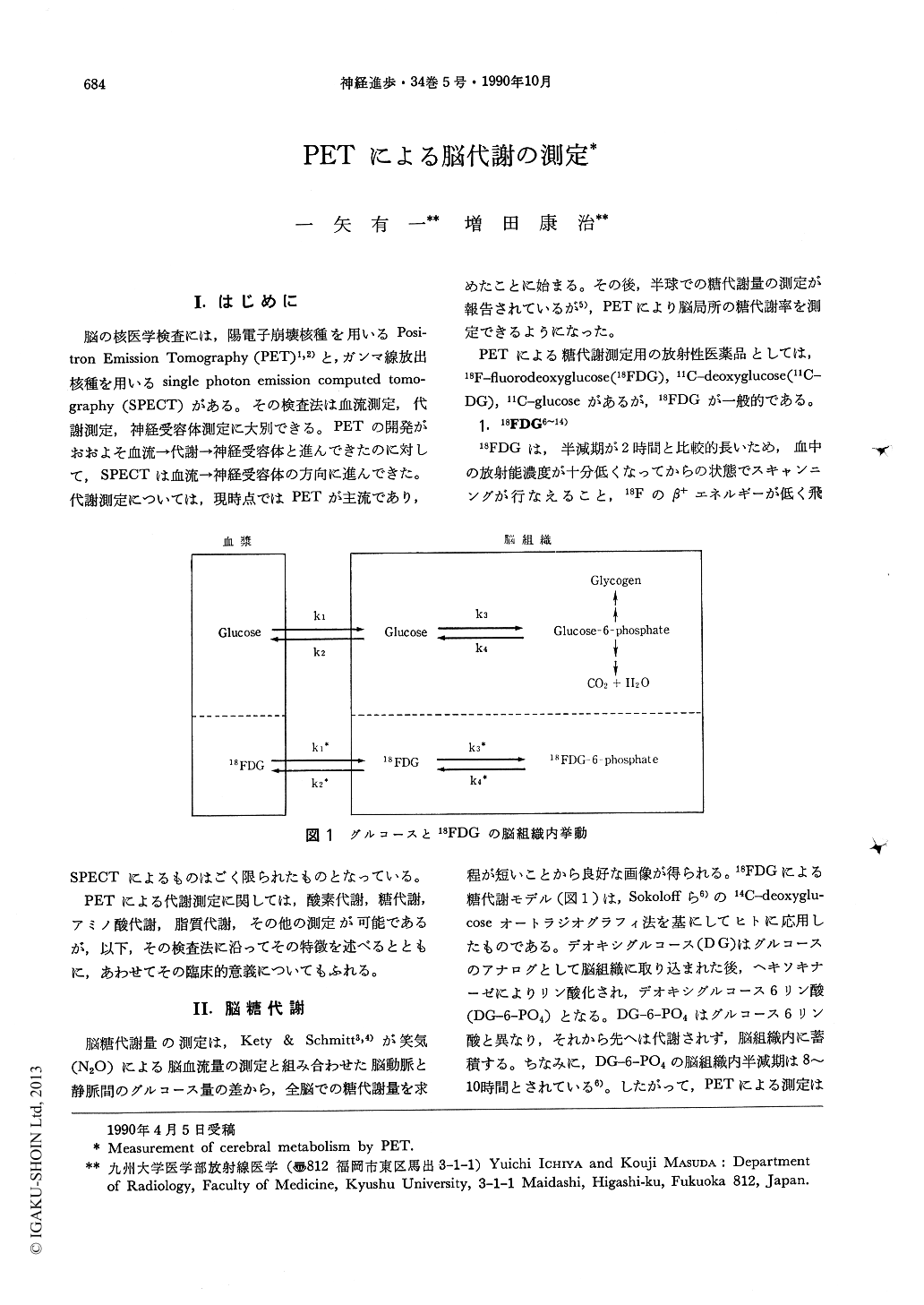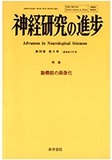Japanese
English
- 有料閲覧
- Abstract 文献概要
- 1ページ目 Look Inside
I.はじめに
脳の核医学検査には,陽電子崩壊核種を用いるPositron Emission Tomography(PET)1,2)と,ガンマ線放出核種を用いるsingle Photon emission computed tomography(SPECT)がある。その検査法は血流測定,代謝測定,神経受容体測定に大別できる。PETの開発がおおよそ血流→代謝→神経受容体と進んできたのに対して,SPECTは血流→神経受容体の方向に進んできた。代謝測定については,現時点ではPETが主流であり,SPECTによるものはごく限られたものとなっている。
PETによる代謝測定に関しては,酸素代謝,糖代謝,アミノ酸代謝,脂質代謝,その他の測定が可能であるが,以下,その検査法に沿ってその特徴を述べるとともに,あわせてその臨床的意義についてもふれる。
Positron emission tomograhy (PET) and single photon emission tomography (SPECT) provides functional images of the human brain. This review concerns the study of cerebral metabolism using PET.
PET study with F-18 fluorodeoxyglucose (FDG) is used to study cerebral glucose metabolism. This method is based on the C-14 deoxyglucose (DG) autoradiographic method described by Sokoloff et al (1977) in animals.Glucose and FDG are transported from plasma to brain tissue by the same carrier, and subsequently phosphorylated to glucose-6-phosphate or FDG-6-phosphate by their respective hexokinases. Glucose-6-phosphate is further metabolized to CO2 and H2O, or converted to glycogen. In contrast, DG-6-phosphate is not metabolized but trapped in the brain tissue for a long time. PET measures the radioactivity of FDG in the plasma, FDG and FDG-6-phosphate in the brain tissue. 100-200 MBq of FDG is administered intravenously. In the serial PET scanning method, data sampling is continued immediately after the injection to 60 min. or more. In the single scanning method, data sampling is done 40~60min. after the injection. The serial scanning method is theoretically superior to single scanning, because rate constants of k1*-k4* can be calculated. However this is not practical, as it takes a long time for data sampling and calculation. In the single scanning method, the values of rate constants obtained in normal volunteers are used. Lumped constant (LC), the ratio of phosphorylation of glucose and DG, is not obtained in usual examinations, and LC value of 0.42 or 0.52 is used. Many abnormalities not shown by morphological examinations are detected by functional images with F-18 FDG PET in patients with dementia, epilepsy, and other degenerative disorders. Besides FDG, C-11 DG and C-11 glucose are also used in the measurement of glucose metabolism. C-11 DG has a short half life of 20 min. This enables repeated examinations within short intervals, and it is considered as a useful agent in the stimulation test. Evaluation of glucose metabolism with C-11 glucose is complicated, as it is metabolized finally to H2O and CO2 in the same manner to natural glucose, and the radioactivity obtained by PET is the sum of all metabolites.

Copyright © 1990, Igaku-Shoin Ltd. All rights reserved.


